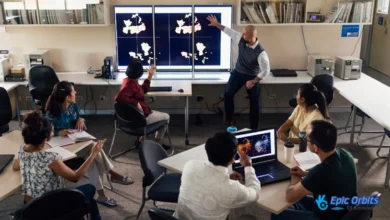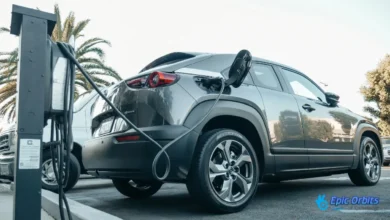How High-Speed Transportation Is Becoming Reality
We dive into the world of high-speed transportation, exploring its current state and future prospects in this comprehensive beginner's guide.
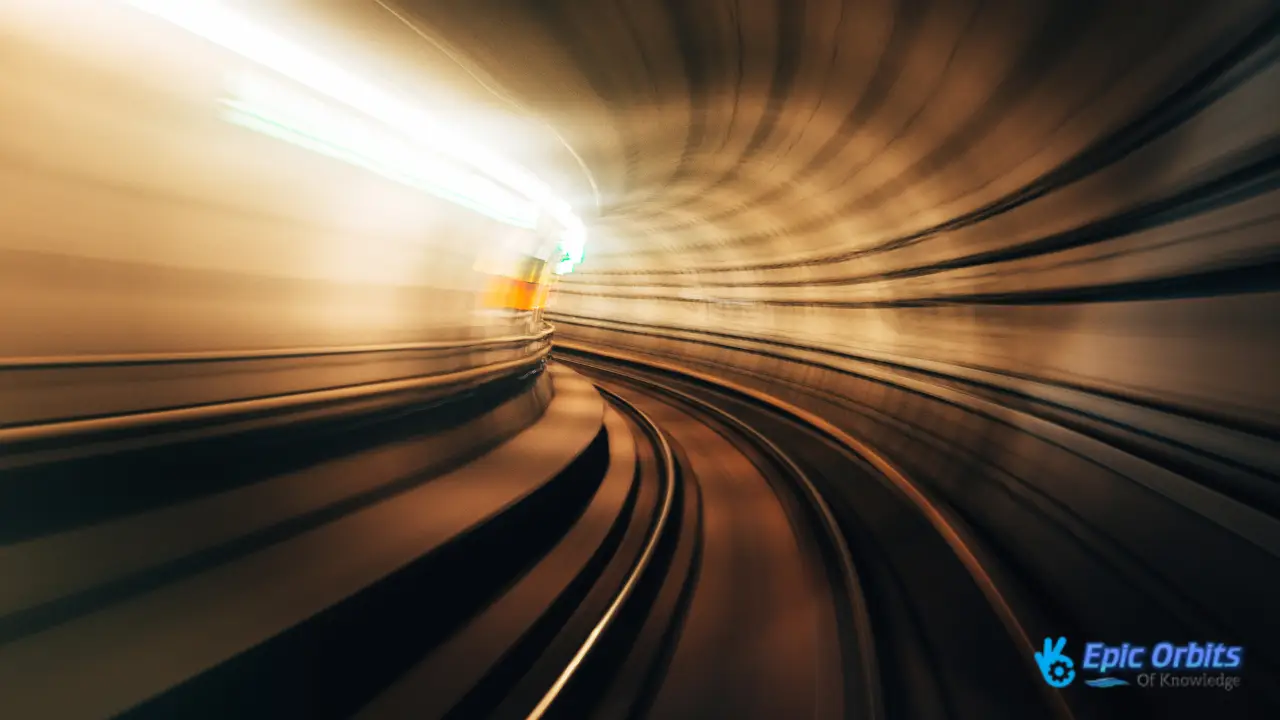
High-speed rail networks are changing the way people travel in a big manner all across the world. There are currently more than 40,000 kilometers of high-speed rail lines in use around the world. This trend has changed the way we travel between places.
Thanks to new technologies in rail transit, we're entering a new era of faster, more efficient ways to travel. We'll also examine how high-speed rail affects modern transport and the economy and environment as we look at its global state.
The Growth of Fast Transportation
The development of high-speed transportation is a big change in how we circulate about since it combines speed with efficiency. As we look into this evolution, it's important to know what makes modern high-speed transportation unique, why it's important, and how it has changed from traditional train systems.
1. What High-Speed Transportation Means Today
High-speed transportation is different from other types of transportation because it can quickly transfer people across enormous distances, cutting down on travel time by a lot. Most high-speed rail lines, like regular trains, use steel wheels on steel rails, but they are made to go far faster. The move to electric trains has been a big part of the growth of modern high-speed rail, which has replaced older turbo trains that ran on gas-turbine engines.
Electric propulsion has made it possible to keep up high speeds for a long time, making high-speed rail a good and efficient way to traverse short and large distances. As technology keeps becoming better, high-speed transportation is getting more complicated, with better signaling systems and safety rules.
2. Why Faster Travel Matters: The Need for Speed
There are both economic and societal reasons why travel should be faster. High-speed transportation can boost the economy by making it easier for people to travel between cities, making it easier for businesses to travel, and improving connectivity. It also improves life by making it easier to go to services, jobs, and fun activities. As cities become more connected, the need for fast, efficient ways to move about is growing.
- This development facilitates better connections for businesses.
- Shortens trip times.
- Makes life better.
3. From regular rail to systems that change the game
There have been many technological improvements since the switch from regular rail to high-speed rail. To handle faster speeds, traditional rail infrastructure has been changed and redesigned. This includes specialized high-speed routes and trains made just for high speeds. Switching from steam and diesel engines to electric propulsion has been crucial since it allows for higher speeds and more efficiency over time.
High-speed rail is different from regular train systems because of its revolutionary track designs, signaling systems, and safety measures. The lessons gathered from early high-speed experiments have helped shape modern high-speed rail networks. These networks show how important it is to have specialized infrastructure and cutting-edge technology.
The Beginning of High-Speed Rail
As we look into the past of high-speed rail, we uncover the important events that have affected how we travel today. Countries have worked together over time to improve high-speed rail.
1. Initial Trials and Speed Records
The idea of high-speed rail started to take shape in the middle of the 20th century, when early tests pushed the limits of how fast trains could go. Rail firms and governments began putting money into research and development in the 1950s and 1960s to speed up train services. France conducted one of the first documented high-speed tests, enhancing the rail network to accommodate faster trains. These early tests were the first steps toward building the first real high-speed rail lines.
During this time, several countries set impressive speed records. For example, in 1954, the French rail firm SNCF's rail network reached a speed of 331 km/h (206 mph). These milestones showed that high-speed rail could work and led to more money being put into building dedicated high-speed lines.
2. The Shinkansen in Japan: The First Real High-Speed Rail in the World
Japan was the first country to build high-speed rail, and in 1964 it started the world's first commercial high-speed train service, the Shinkansen. The first Shinkansen line connected Tokyo and Osaka. This system changed the way people traveled by train in Japan. The Shinkansen was not only quicker than regular trains, reaching speeds of up to 210 km/h (130 mph), but it also set new standards for safety, comfort, and reliability.
The success of the Shinkansen made other countries want to build their own high-speed rail systems like Japan did. The Shinkansen had an effect on the development of high-speed rail systems around the world, not just in Japan.
3. Europe Follows Suit: TGV and More
Europe quickly adopted the idea of high-speed rail. Italy opened its first high-speed line, the Direttissima, between Rome and Florence in 1977. In 1981, France started the Train à Grande Vitesse (TGV) service between Paris and Lyon. The TGV was a big step forward in technology; it could go up to 270 km/h (168 mph) on dedicated high-speed routes.
Each country in Europe marked the growth of high-speed rail by adapting the concept to suit its unique geography, economy, and politics. For instance, France put significant effort into making sure that new dedicated lines could reach high speeds while still working with the infrastructure that was already in place. This method made it possible for high-speed networks to slowly spread across Europe. Countries like Germany, Spain, and the UK spent a lot of money building their own high-speed rail systems.
The integration of Europe was crucial for the growth of high-speed services that cross borders. This made the continental network more integrated. Because of this, high-speed rail has become an important part of Europe's transportation system, making it easier and faster to travel across the continent.
How High-Speed Rail Technology Works
We learn about the complicated systems that make high-speed rail work, like the tracks, the aerodynamics of the trains, and the energy-efficient power systems. High-speed rail (HSR) has changed the way people get around by providing a quick, effective, and relatively eco-friendly alternative to traveling long distances.
1. Requirements for Tracks and Infrastructure
The infrastructure that supports high-speed rail is a key part of its success. Like regular trains, most high-speed rail lines have steel wheels on steel tracks. However, the wheels and rails are made to work better at greater speeds. The rails are made to be straighter and more level than regular rail lines, which cuts down on curves and slopes that could slow the train down.
Building high-speed rail tracks requires the use of innovative materials and methods to ensure they are stable and last a long time. For example, using continuously welded rails cuts down on the noise and vibration that come with standard rail junctions. Furthermore, the rails are sometimes raised on viaducts or put in tunnels to use less land and have less of an effect on the environment.
| Infrastructure Component | Conventional Rail | High-Speed Rail |
| Rail Type | Jointed rails or older technology | Continuously welded rails |
| Track Alignment | More curves and gradients | Straighter and more level |
| Signaling System | Traditional signaling | Advanced signaling and automation |
2. Designing trains and how they move through the air
To reach and keep high speeds, it is essential to design high-speed trains well. Aerodynamics are important for lowering air resistance, which is a big deal when speeds go over 200 km/h (124 mph). Modern high-speed trains have sleek, streamlined designs that help them cut through the air with little resistance.
High-speed trains are made of advanced materials that maximize strength and minimize weight. Not only does this make the train more energy efficient, but it also makes it work better overall. Using distributed traction, which means that numerous cars have motors, makes it easier to speed up and gives you better control at high speeds.
“The aerodynamic design of high-speed trains is very important for lowering energy use and making them work better overall.”
3. Energy Efficiency and Power Systems
Electricity is the main source of power for high-speed trains. This electricity comes from overhead catenary networks or, in some situations, a third rail. Electric traction technology makes it possible to generate a lot of electricity and run things efficiently. The trains can go fast and keep going for a long time thanks to advanced electric motors and power electronics.
One of the best things about high-speed rail is that it uses less energy. High-speed rail can use less energy per passenger kilometer than other types of transportation, like flying or driving. High-speed trains are even more efficient because they use regenerative braking systems that catch kinetic energy and turn it back into electrical energy.
- Electric traction technology makes it possible to produce a lot of electricity and run things efficiently.
- Modern trainsets can go faster and stay at high speeds for longer thanks to advanced power electronics.
- Regenerative braking systems use kinetic energy and turn it back into electrical energy.
We can comprehend how complicated and innovative high-speed rail technology is by learning about the details of track infrastructure, train design, and power systems. As the globe changes, high-speed rail will play a bigger and bigger role in defining our transportation networks.
The Best Countries for High-Speed Transportation
As we look at the current condition of high-speed rail, a few countries stand out for how far they've come. High-speed transit is becoming an important part of modern infrastructure, and many countries are putting a lot of money into building networks that are quick, efficient, and dependable.
1. China's amazing growth of its high-speed network
China has been a leader in building high-speed rail, and its network has grown quickly over the past twenty years. The country's high-speed train lines have changed how people get around by linking major cities and economic centers over long distances. China has put a lot of money into high-speed rail, come up with new technologies, and worked to connect its rail network with other forms of transportation.
- The world's greatest high-speed rail network is in China. It already covers more than 29,000 kilometers.
- The network has been getting bigger by several thousand kilometers every year.
- China's high-speed rail has cut down on travel time between large cities by a lot, which has helped the economy.
2. Japan's Ongoing Innovation
Japan has been a leader in high-speed rail for a long time, and its Shinkansen network is the best in the world. Japan keeps coming up with new ideas, such as better train design, better track technology, and more efficient operations. The country's dedication to high-speed rail is clear from its continued work on new lines and improvements to old ones.
People know that Japan's high-speed rail service is on time, safe, and comfortable. The Shinkansen is a well-known example of Japan's technological skill and a model for other countries to follow.
3. Integration of High-Speed Rail in Europe
Europe has made a lot of progress in building a high-speed rail network that connects many countries and rail systems. The Trans-European Transport Network (TEN-T) and other projects have helped the European Union promote and pay for the growth of high-speed rail.
Key high-speed routes that span borders have changed how people travel between major European cities, making it easier for individuals and things to move around. The Channel Tunnel and High Speed 1 are two projects that have linked national networks that were once separate, making the European system more unified.
- The Channel Tunnel Rail Link (CTRL), which is also called High Speed 1, opened in 2007 and linked London to the Channel Tunnel.
- The integration of high-speed rail in Europe has made travel faster and made rail travel more competitive with air travel.
- It is still difficult to make high-speed services that work across different national rail systems.
In the end, China, Japan, and several European countries are at the forefront of high-speed transit. Their investments in high-speed rail networks are not only changing how people travel, but they are also helping the economy thrive and the environment stay healthy.
Maglev: The Next Step in Fast Transportation
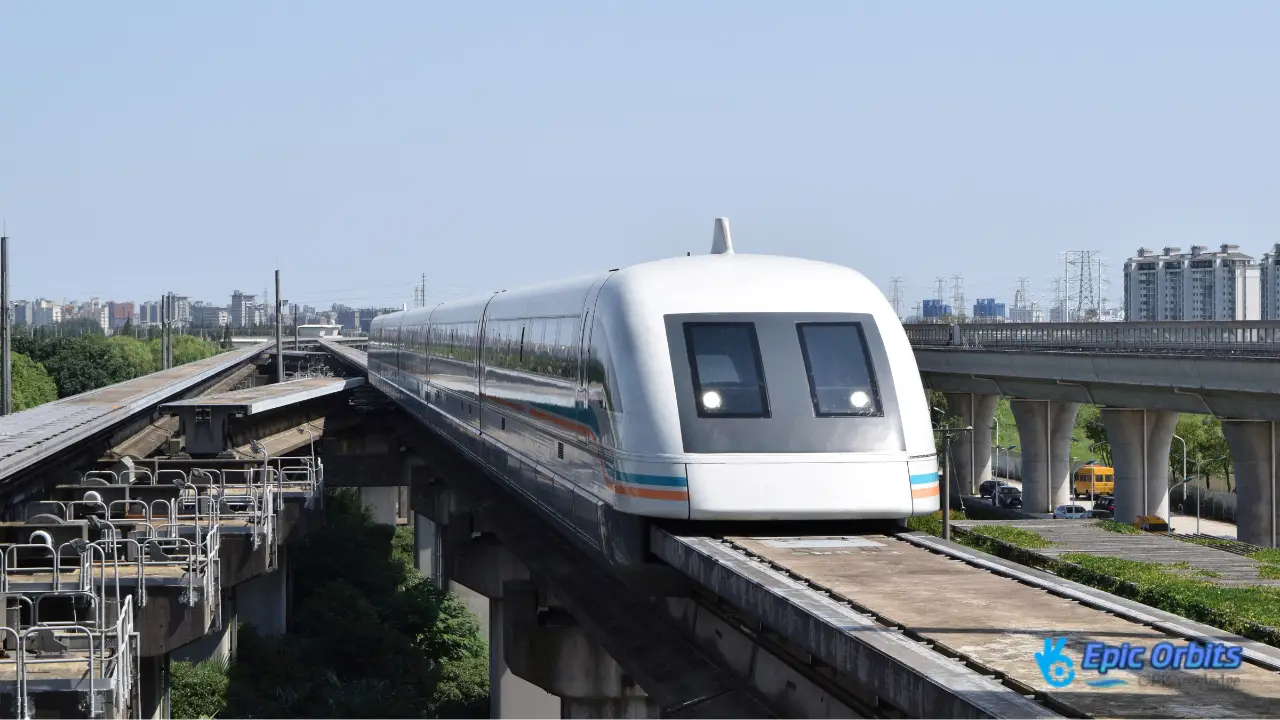
Maglev technology is the next big step in high-speed transportation. It uses magnetic levitation to move trains at amazing speeds. This new method does away with the requirement for standard rails, which cuts down on friction and makes the operation go more smoothly and quietly.
Magnetic levitation technology employs magnetic forces to lift and move the train, so it doesn't have to touch the track. Electromagnets provide an upward force that works against the weight of the train to do this. A linear synchronous motor is usually used to move the train forward using an electromagnetic field.
The physics of Maglev is based on electromagnetism, which says that the forces needed for levitation and propulsion come from the interplay of magnetic fields. This technology could reach speeds that are similar to or even faster than those of regular high-speed rail.
Some countries have already built or are working on Maglev systems. For example, Japan's Linimo is a low-speed Maglev line that people use to go around in cities. The Shanghai Maglev Train in China, on the other hand, is one of the most famous high-speed Maglev lines and can go as fast as 431 km/h (268 mph). Other countries, including Germany and South Korea, have also explored Maglev technology for its application in high-speed and urban travel.
Maglev technology has several benefits over standard rail systems, such as the ability to go faster, less need for maintenance because there are fewer moving parts, and less noise. But it also has many problems to confront, such as high construction costs and the need for new, separate infrastructure that can't be connected to existing train networks.
Some Maglev systems require rare-earth elements, which can be difficult to acquire and expensive to work with. This is another problem. Even with these problems, Maglev technology is still a viable choice for future high-speed transportation needs because it could be a more efficient and environmentally friendly alternative.
As we look at the business case for putting Maglev into use, it's evident that even while the technology has certain theoretical benefits, not many systems have moved past the planning stage. The high initial expenses and need for infrastructure are big problems. Still, Maglev is an essential area of study in the search for quicker, more efficient transportation since it keeps getting better and could lower operational expenses.
Hyperloop and Ideas for the Future
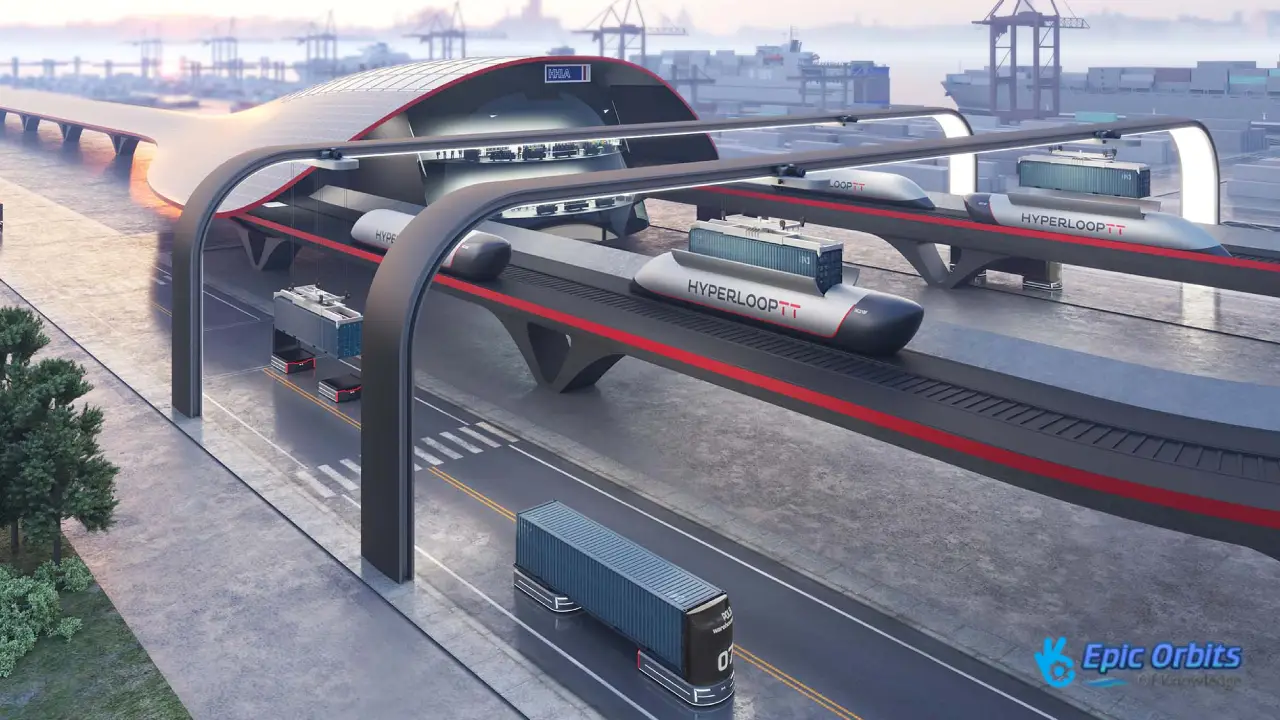
The Hyperloop is a new way of getting around that will change the future of high-speed travel. The Hyperloop claims to cut travel times between cities to almost the speed of sound by using magnetic levitation and vacuum-sealed tubes.
The Hyperloop system moves people in pods through empty tubes at speeds of more than 700 mph. The Hyperloop system achieves this by reducing air resistance and utilizing electric propulsion to accelerate the pods. The end result is a transportation system that is not only faster than traditional rail or air travel, but it may also use less energy.
Elon Musk, an entrepreneur, made the idea famous in 2013. Since then, a number of businesses have started working on and testing Hyperloop technology.
Virgin Hyperloop One, Hyperloop Transportation Technologies (HTT), and Elon Musk's The Boring Company are some of the companies that are leading the way in Hyperloop development. These businesses are working on different parts of Hyperloop technology, such as the safety systems, the infrastructure for the tubes, and the design of the pods.
For example, Virgin Hyperloop One has made a lot of headway on its test track in Nevada and has successfully tested it with passengers.
Hyperloop technology has a lot of potential, but there are still many technical problems that need to be solved before it can become a reality. These include making vacuum systems that work, making sure passengers are safe and comfortable, and making the technology work on longer test tracks that may be used for commercial transportation.
Companies are getting better at dealing with these problems by building test tracks, prototype pods, and validating parts. There are also problems with regulations and certifications that are specific to this new mode of transportation.
As we move forward, it will be crucial to look at realistic timescales for the commercial Hyperloop depending on how far forward the technology is and what problems are still in the way.
High-speed transportation has economic benefits
The economic benefits of high-speed rail networks are becoming more and more clear as they grow. High-speed transit isn't only about getting people to their destinations faster; it's also about boosting the economy, creating jobs, and making it easier for communities to communicate with one another.
1. Urban Connectivity and Regional Development
High-speed rail has a big effect on regional growth because it makes it easier for people to travel from one city to another. High-speed rail makes it easier for people to live in one place and work or study in another by cutting down on travel time. The result opens up more job opportunities and boosts the economy. Transportation researchers have concluded that high-speed rail travel in Asia and Europe is a better option than flying for trips of up to roughly 1,000 km (620 miles).
| Region | High-Speed Rail Network | Economic Impact |
| Asia | Extensive networks in China, Japan, and South Korea | Significant economic growth, increased urban connectivity |
| Europe | Comprehensive networks across France, Germany, Italy, and Spain | Enhanced regional development, increased tourism |
2. Creating jobs and boosting the economy
Building and running high-speed rail systems creates many jobs, both directly and indirectly. The high-speed rail business creates jobs in several fields, from construction workers to train operators. High-speed rail can also help local economies by bringing businesses to previously inaccessible areas.
3. Effects on Business and Tourist Travel
High-speed rail transforms travel patterns by simplifying day trips and weekend getaways between interconnected cities. Since it's simple to travel, more people are likely to visit new places, which is beneficial for the tourism business. High-speed rail gives business travelers competitive door-to-door journey times compared to flying, as well as the benefits of central city stations, productive travel time, and less stress. Such benefits can lead to more business travel, which makes it easier for people to meet in person, which is important for commercial deals and partnerships.
High-speed transportation is going to continue to have a favorable effect on economies around the world by making it easier to connect and cutting down on travel times. As we progress, we must acknowledge and leverage these economic advantages to foster more interconnected and enduring communities.
Benefits for the environment of high-speed rail
As we look for more environmentally friendly ways to circulate around, high-speed rail stands out as one of the best possibilities. There has never been a greater demand for greener travel options, and high-speed rail is a fantastic alternative to other forms of transportation.
High-speed rail has a far smaller carbon footprint than other forms of transportation, which is one of the best things it does for the environment. To see how big this disparity is, let's look at the data:
| Mode of Transport | CO₂ Emissions per Passenger Kilometer (g) |
| High-Speed Rail | 4-6 |
| Air Travel | 150-200 |
| Car Travel | 120-170 |
| Bus Travel | 30-100 |
This comparison shows that high-speed rail is better for the environment, which makes it a beneficial choice for people who care about their carbon impact.
High-speed rail is beneficial for the environment not only because it doesn't release carbon dioxide, but also because it uses less energy. High-speed rail systems can be very energy efficient by using cutting-edge technology and the best routes. The possibility of adding renewable energy sources to the electricity infrastructure used by high-speed trains also makes them more sustainable.
High-speed rail has many environmental benefits, but it's also important to consider how it will affect land usage and noise pollution. It is possible to design high-speed rail infrastructure so that it uses less land and breaks up habitats less. For example, you can plan routes that don't go through delicate ecosystems, and you can use elevated rails to use less land. Furthermore, improvements in train design have greatly cut down on noise pollution, making high-speed rail a better experience for both passengers and the towns along the route.
We can better grasp the full environmental impact of high-speed rail and how it compares to other types of transportation by looking at these elements.
Transportation at high speeds in the United States
High-speed rail is common in many countries, but the US has struggled to implement it. The United States has had a difficult time building high-speed rail on a large scale because it has focused more on freeways than trains. It has been trying to do this since the 1960s.
1. Past Efforts and Problems
The idea of high-speed rail in the U.S. is not new. Early tests and ideas go back many years, and many initiatives have been started and then stopped because of money problems or political resistance. One of the first and most important initiatives was the launch of the Metroliner service between Washington, D.C., and New York City in the late 1960s. Even though it wasn't really high-speed by today's standards, it was a step toward quicker rail travel.
The first attempts had many problems, such as not having the right technology, being too expensive, and having to compete with air travel and roadways. Additionally, the diverse geography of the U.S. made it challenging for engineers to construct a high-speed rail network that functioned uniformly across all regions.
2. Acela and Beyond are current projects.
The Acela Express service run by Amtrak along the Northeast Corridor is one of the few good things about high-speed rail in the U.S. Acela is the fastest train service in the U.S., reaching speeds of up to 150 mph in some areas. However, it is not as fast as some international trains.
There are several more initiatives going on across the country to improve high-speed rail service, in addition to Acela. These include the California High-Speed Rail project, which wants to build a high-speed line between Los Angeles and San Francisco, as well as attempts in other areas like Florida and the Pacific Northwest to improve rail services.
| Project | Location | Status | Max Speed |
| Acela Express | Northeast Corridor | Operational | 150 mph |
| California High-Speed Rail | California | Under Construction | 220 mph (planned) |
| Brightline | Florida | Operational | 125 mph (planned for 186 mph) |
3. Problems with politics and money
Politics and money play a big role in the growth of high-speed rail in the U.S. High-speed rail projects frequently go slowly because of the complicated political situation, which includes partisan splits and regional interests. The U.S. federal system also makes it difficult to carry out big infrastructure projects that straddle state lines.
Compared to countries with effective high-speed rail networks, the U.S. has fewer ways to pay for them. The historical preference for highway spending over rail investment has made it even harder to build complete high-speed rail systems. However, if people's views on climate change, infrastructure spending, and public transportation shift, it could create new opportunities for the development of high-speed rail in the future.
The U.S. is still having trouble building high-speed rail, but lessons from other nations and projects that are still going on will be very important in determining the future of transportation in the U.S.
The California High-Speed Rail Project
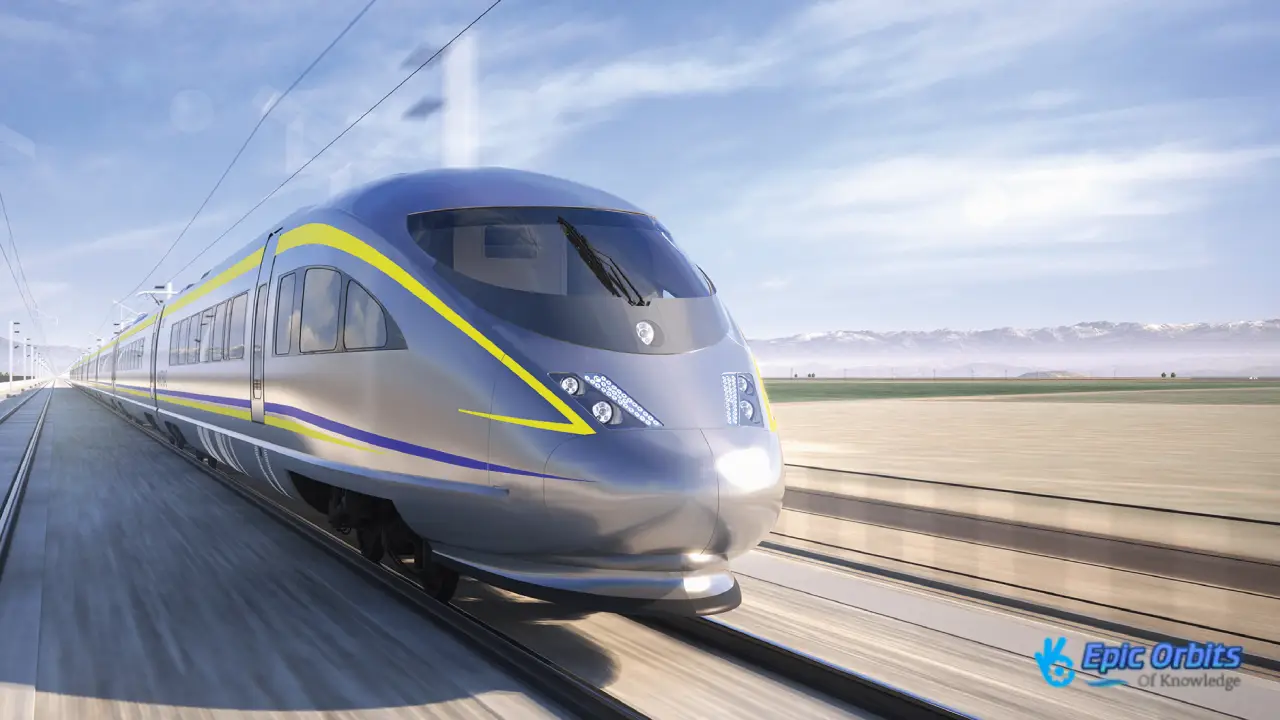
California is leading the way for high-speed rail in the US by being the first state to come up with an integrated network design. The California High-Speed Rail Project wants to change the way people get around by linking the state's biggest cities and business areas.
The goal of the project was to build a high-speed rail network that would not only cut down on travel time between Los Angeles and San Francisco but would also work with other forms of transportation. The first steps in planning included a lot of route planning, environmental impact assessments, and getting money.
The goal of the initiative was to spark economic growth, create jobs, and protect the environment. The high-speed train was supposed to connect big cities and make highways and airports less crowded, lower greenhouse gas emissions, and encourage better land use.
The California High-Speed Rail Project has had many problems, such as going over budget, being late, and facing political resistance. Despite these problems, construction has moved on in different parts, and the project is now in the implementation phase.
One of the biggest problems has been keeping track of the complicated infrastructure needed for high-speed rail, which includes special rails, elaborate signaling systems, and high-speed trains. The project has also had to deal with a number of regulatory and environmental issues.
We can learn important things from the California High-Speed Rail project that could help future high-speed rail projects in the US and other places. It is critical to provide accurate cost estimates, achieve political consensus, and implement things in stages.
The initiative could lead to anything from less regional service to the complete system being finished. California's experience will probably have an effect on other states and areas that are contemplating investing in high-speed rail. It will provide them useful information on the pros and downsides of these kinds of big projects.
Infrastructure Needs for Fast Transportation
Infrastructure is what makes high-speed transportation possible, allowing trains to go very fast. Building high-speed rail networks needs a complete infrastructure that can handle high speeds, keep people safe, and stay efficient.
1. Dedicated track systems and right-of-way
Dedicated track systems play a crucial role in high-speed rail, enabling trains to operate at their maximum speeds without any interference from other trains. To ensure smooth travel, these dedicated track systems include features such as strengthened rails, advanced signaling systems, and precise alignment.
The right-of-way for high-speed rail is also carefully constructed so that it doesn't cross paths with other types of transportation as much as possible, which lowers the likelihood of accidents. This special path lets the high-speed rail keep going quickly and efficiently.
2. Designing and putting together a station
We build high-speed train stations to ensure security, comfort, and efficiency for travelers. To make travel easier, these stations are often connected to other forms of transit, like buses and subways.
- Stations have modern ticketing systems and places to wait.
- They often have things like restaurants, stores, and lounges.
- We prioritize accessibility by designing the facilities to accommodate all travelers, including those with disabilities.
3. Systems for maintenance and safety
Maintenance is an important part of running high-speed rail, as it keeps the infrastructure in excellent shape. Advanced monitoring systems continuously monitor the track geometry, overhead wires, and other critical components to identify issues before they escalate.
Safety systems are just as crucial, and there are a lot of them in place to keep high-speed activities safe. These include systems that control trains, detect intruders, and monitor the weather. All of these things help high-speed rail systems around the world have a stellar safety record.
A central computerized facility also monitors and regulates all train movements, and inspects the rails for any potential obstructions. This advanced infrastructure makes it possible for high-speed rail to run safely and smoothly.
What it's like to ride on high-speed trains
High-speed rail has changed the way we travel by combining comfort, speed, and convenience in a way that no other mode of transportation can. As we continue to push the limits of transportation technology, making the passenger experience better is still the most important thing.
The comfort and amenities on high-speed trains are crucial to the passengers' overall experience. Large seats, ample legroom, and adjustable headrests enhance the comfort of modern trains. To meet the demands of all passengers, several high-speed rail services now offer amenities like Wi-Fi, power outlets, and food and drink service on board. For example, some trains have quiet cars or exclusive spaces for work travelers, which makes the trip even better.
High-speed rail significantly reduces travel times between cities, which is one of its best features. High-speed rail is a great option for passengers because it is as fast and easy as flying. Advanced train designs, better rail infrastructure, and better management of operations all contribute to the competitive trip times. Because of this, passengers can have a quick and simple trip, which makes high-speed rail a favorable choice for both business and leisure tourists.
High-speed rail ticketing systems have changed to make things easier and more flexible for customers. High-speed train operators around the world use different tariff structures and pricing tactics, so passengers can pick the ones that work best for them. The construction of modern high-speed trains and stations prioritizes accessibility. They feature amenities such as wheelchair-accessible seating, elevators, and tactile signs to assist individuals with limited mobility. Digital technology has also changed the way passengers travel. Mobile ticketing, real-time travel information, and easy links to other forms of transportation are becoming more and more common.
As high-speed rail spreads over the world, making the trip more comfortable and faster and making it easier to buy tickets, it will continue to be a primary objective. The industry wants to use technology and a new design to give travelers a better experience that matches their changing needs.
Getting money for high-speed projects
As high-speed rail changes transportation, the question of how to pay for these projects becomes more and more important. High-speed rail is more than just a way to get around; it can help whole states and regions grow economically and bring new life to cities.
1. Models for public and private investment
There are different ways to pay for high-speed rail projects, but they typically fall into two groups: public and private investment. Government grants, bonds, and money from the national or regional budget are common sources of public funding. Private investment, on the other hand, comes from private corporations, investors, and sometimes from public-private partnerships (PPPs).
People generally choose public investment models because they can earn a lot of money without having to worry about making money right away. However, political shifts and tight budgets can have an impact. Private investment models bring in knowledge and efficiency, but they need unambiguous returns on investment.
2. Ways to Get Money from Other Countries
Each country has its own way of funding its high-speed rail projects. For instance, government bonds initially funded Japan's Shinkansen, while both public and private sources provided funding for France's TGV. The Chinese government has made a lot of money and borrowed a lot of money from state-owned banks to help build the country's high-speed network.
Learning about these foreign methods can help you come up with effective ways to earn money. A comparative comparison of these models can reveal best practices and possible shortcomings.
| Country | Funding Model | Key Features |
| Japan | Public Bonds | Government-backed bonds for initial funding |
| France | Mixed Public-Private | Combination of public funds and private investment |
| China | Government Investment and State-owned Bank Loans | Significant government support and loans from state-owned banks |
3. Cost-Benefit Analysis and Return on Investment
To see if high-speed rail projects are worth doing, it's important to do a detailed cost-benefit analysis. This means figuring out how much money the project will make directly and how it will help the economy and society as a whole, such as by saving time, reducing traffic, improving the environment, and creating jobs.
This study heavily relies on estimating the ridership and revenue potential. It is important to look at the long-term return on investment (ROI) for existing high-speed systems by comparing the initial forecasts with the actual results to see if the project is financially viable.
Different groups of people, such as governments, corporate investors, and communities, may have different ideas about the usefulness of high-speed rail. To obtain the funding you need and ensure the project is a success, you need to understand these points of view.
Connecting with current transportation networks
Connecting high-speed rail to the current transportation system is crucial for its maximum usefulness. This means making travel easier by combining high-speed rail with other forms of transportation, such as buses, subways, and bike-share systems.
1. Multimodal systems that work together
For high-speed rail to work, it is critical to make systems that work well with other modes of transportation. This entails creating transportation networks that integrate multiple modes of transportation, enabling seamless switching between them. For example, high-speed rail stations can be built so that they work with local public transportation systems, which makes it easier for people to arrive to their final destinations.
Integrated ticketing systems are also crucial because they let people use different types of transportation with only one ticket. This not only makes the trip better for passengers, but it also encourages the use of multimodal transportation, which means people don't have to rely as much on their cars and may travel in a more environmentally friendly way.
2. Solutions for Last-Mile Connectivity
Connecting to the last mile is an important part of making high-speed rail operate with other forms of transportation. It means that passengers can go from the high-speed rail station to their final destination, usually by using local transportation options like buses or bike-sharing systems.
High-speed rail becomes a more appealing alternative for travelers when there are excellent last-mile connection options that improve the whole travel experience. This can be done by coordinating the schedules of high-speed rail services with local transportation, as well as by using real-time information systems that keep passengers up to date on their route.
| Mode of Transport | Integration Features | Benefits |
| High-Speed Rail | Integrated ticketing, coordinated scheduling | Enhanced passenger experience, reduced travel times |
| Local Public Transport | Real-time information, seamless transfers | Increased mobility, reduced congestion |
| Bike-share Systems | Convenient access, integrated payment systems | Promotes sustainable travel, last-mile connectivity |
3. Unified Scheduling and Smart Ticketing
Smart ticketing and uniform scheduling are two important parts of integrated transportation systems. Smart ticketing systems make travel easier by letting travelers buy one ticket for their whole trip, regardless of what kind of transportation they use.
Unified scheduling makes sure that multiple types of transportation work together, which cuts down on wait times and makes transfers more efficient. Advanced IT systems that combine the schedules of numerous transportation services can do this. They can provide passengers real-time information and updates throughout their trip.
The Future of Fast Travel
New technologies are going to change the world of high-speed transportation, making it faster and more connected than ever. It is evident that the next generation of travel will be faster, more efficient, and more environmentally friendly as we look into the future with high-speed rail and other modern transportation systems.
The growth of existing high-speed rail networks will probably include faster trains, better connections to other forms of transportation, and service to additional areas. This change will be made possible by new technologies like automation, artificial intelligence, and digital tools that make operations more efficient and improve the passenger experience.
Maglev and Hyperloop, two new technologies, have the potential to revolutionize our travel experience. These new ideas promise to cut down on travel time by a lot while having a smaller effect on the environment. As these technologies get better, we should expect to see them added to both old and new high-speed transportation networks.
Changing travel habits, environmental concerns, and economic issues will also affect the growth of high-speed transportation in the next few decades. The sector will have to change to fit new ways of traveling and working after the pandemic, which could mean that transportation systems would need to be more flexible and responsive.
The quest for more international standardization and cross-border services will also have an effect on the future of high-speed transit. This might make continental networks work better together, which would make travel across borders easier and more efficient.
Parts of Africa, South America, and Asia that don't have many high-speed transportation networks right now could see a lot of growth in this area. High-speed transportation in these areas could have a big effect on their economies and global connectivity.
Sustainability will play a bigger and bigger role in the design of high-speed transportation, from the choice of materials to the utilization of renewable energy sources. This emphasis on sustainability is essential for guaranteeing that high-speed transportation enhances eco-friendly mobility systems.
In conclusion, technology advances, shifting travel patterns, and a focus on sustainability will all have an impact on the future of high-speed transportation. When these things come together, we may expect to see transportation systems that are faster, more efficient, and better for the environment. These systems will change the way we move and connect with each other.

